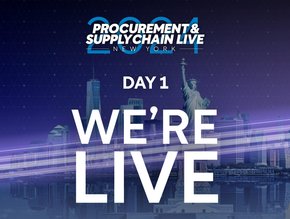Elevate Your Sustainability Transparency

No longer a 'nice to have', sustainability has rapidly become a societal expectation, with companies facing mounting pressure to align their operations accordingly.
The sustainability ethos now touches everything within the business environment – supply chains included – and organisations are consequently transforming the way they approach their sourcing, production, and distribution processes.
Many companies are finding the transition a tricky one, however, and are grappling with various challenges in effectively managing their supply chain sustainability data. From disparate data sources to the complexity of multi-tiered supply networks, navigating the intricacies of sustainability reporting is proving daunting for many.
Furthermore, ensuring data accuracy, integrity, and accessibility remains an ongoing struggle for organisations seeking to uphold a commitment to transparency and accountability.
Businesses often look at their current tech stacks to help solve emerging challenges – a strategy which can be successful in the short term. More often than not, however, they quickly realise that the complexity and expansiveness of collecting, synthesising, maintaining, and reporting on sustainability data is overly challenging to manage on their own.
Purpose-built technology solutions
Purpose-built technology solutions facilitate better processes, security, and efficiency. This translates into improved consistency, data integrity, visibility, and disclosures.
Specifically, purpose-built technology can help businesses manage their supply chain data via:
- Versatile data collection methods that can adapt to different input methods and technological maturity. Whether your suppliers prefer using digital surveys, providing Excel sheets, or connecting via integrations, allowing for flexibility will help you engage with your network to make reporting fit their capabilities.
- Consistent and recurring data collection processes to reduce information gaps. Technology that can build a repeatable process or schedule for your partners to provide data will reinforce a procedure that will get easier with time and strengthen your working relationships.
- User-friendly interfaces for external users that lowers product adoption barriers. Learning new technology is hard enough for internal users, but increasing adoption with external parties can be much harder to enforce. The easiest way is to make the process as simple as possible with a solution that emphasises an intuitive user experience for both occasional and regular users.
- Automated calculations and unit conversions to get the desired output format without demanding specific input types. Individuals who maintain primary sustainability data are seldom the ones who produce final reports. Automating calculations to reduce errors and extra work in the handoff process improves data integrity along with the downstream reporting and analysis.
- Assurance facilitation and auditing cost efficiencies. As indicated, there is a growing gap between assurance expectations and current proficiency levels. Improved data consistency and automation, along with better collaboration, support more efficient external audits helping to keep costs lower.
- Data visualisation and comprehensive up and downstream reporting. Granular reporting helps users pinpoint trends at all levels of the business and across the supply chain to help leaders identify risks and opportunities that ultimately improve sustainability strategy.
In summary, steadily encroaching regulations combined with heightened customer expectations has made managing supply chain sustainability data an increasingly important task for companies.
Purpose-built reporting technology has become a powerful tool for sustainability managers, offering a suite of capabilities designed to streamline data collection, enhance transparency, and drive actionable insights across supply chain ecosystems.
Embracing a data-driven approach and leveraging these purpose-built technology solutions is likely to better enable organisations to achieve their supply chain sustainability data management goals.
This article is excerpted from a longer whitepaper titled 'Easing the Burden of Collecting Supply Chain Sustainability Data' by Alexander deLong.
Click here to download the whitepaper.
******
Make sure you check out the latest edition of Supply Chain Digital and also sign up to our global conference series - Procurement & Supply Chain 2024
******
Supply Chain Digital is a BizClik brand
- Argon & Co: The EU Ban Forcing a Supply Chain RethinkSupply Chain Risk Management
- RELEX: Preventing Food Waste with Improved Demand PlanningSustainability
- Procurement & Supply Chain LIVE New York: Day 1Sustainability
- Boeing, DHL Group Among Firms Signed up to IATA SAF RegistrySustainability






